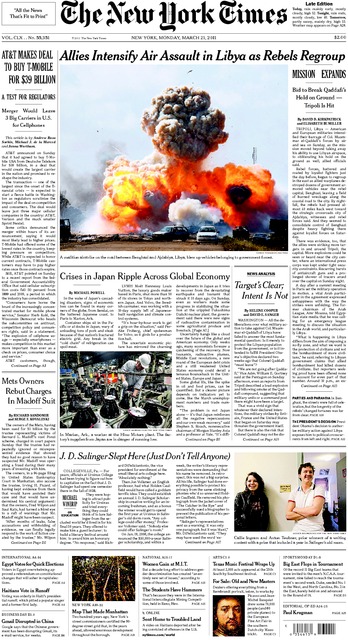While staying at a Marriott near Dulles Airport on business, I wandered into the exhibit room of a conference on Human Social Cultural Behavioral Modeling. Apparently the DOD has funds dedicated to understanding the society and culture of the places where soldiers are fighting, and the room was full of government contractors (current or hopeful) with a wide range of exhibits, mostly tied to the conflicts in Iraq and Afghanistan.
One of the more impressive was a souped-up Android phone, built into a case designed to withstand some rough handling and with a microphone attached.
You can speak English into the phone, it does language recognition and then translates into the language of your choice (five options including Pashto, colloquial Iraqi, etc.) Before the phone speaks your message, you can see the written version in English of what the phone thinks you said, and you can adjust the delay time to give you time to approve or change your message.
Then the person you are having a conversation with can speak Pashto into the phone and the phone translates it into English.
At the rate technology moves, I suspect it is only a matter of time before consumer versions will be available. If not 2-3 years, then 5 or 10 years from now I expect we'll be able to get an app that will do simultaneous translation from any language to any language.
What will be the impact on world travel if there are no language barriers? Where in the world might you decide to travel if you didn't need to worry about not knowing the language?
I expect this will have an impact on travel patterns, and I'm afraid it will also have an impact on the study of foreign languages.
If I can speak fluently to someone in any language through my phone, the incentive to actually learn their language will be reduced. I don't think the study of foreign languages will stop, but I expect it will be greatly reduced. It takes hundreds if not thousands of hours to learn a foreign language, and if some of the incentives are removed, many people will invest that time elsewhere.
That would be a shame. It is a beautiful thing to learn a foreign language. Studying a foreign tongue teaches powerful lessons about the grammar of your native idiom. It is marvelous to practice and finally master making new sounds. It is a thrill when you can finally start to understand speech in that foreign language directly, without first translating into your own language. Studying languages related to your own, such as German or French or Spanish for English speakers, helps you understand your own vocabulary.
If technology reduces the practical value of foreign language study, as it seems that it will within the next decade or so, I expect that the practice will decline, the way mastery of a musical instrument has become much less common.












